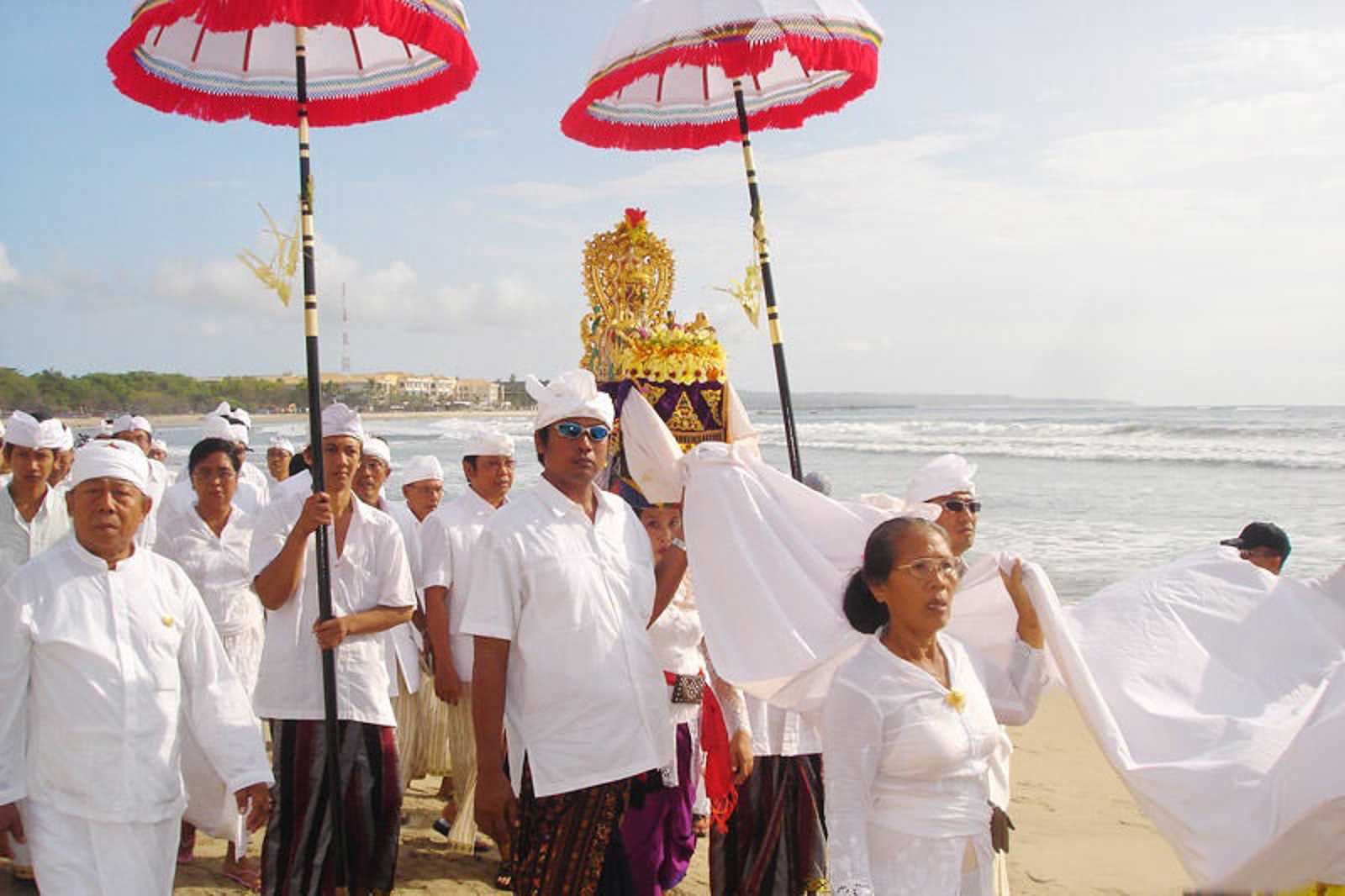Nyepi Day in Bali is a New Year celebrated unlike anywhere else on the planet. The Saka New Year here is also known as the Bali day of silence. It's ultimately the quietest day of the year – all of the island's inhabitants abide by a set of local rules that bring routine activities to a complete halt. Roads all over Bali are void of any traffic and nobody steps outside of their home premises.
Most regard Nyepi as a much-anticipated occasion. Some expats and those coming from neighbouring islands prefer escaping Bali for the day rather, due to the restrictions. Anyhow, Nyepi is worth experiencing at least once in a lifetime – the days before and after offer some rare sights.
Nyepi Day in Bali - one of the highlights of Bali Festivals and Events Calendar (Read all about Bali here)
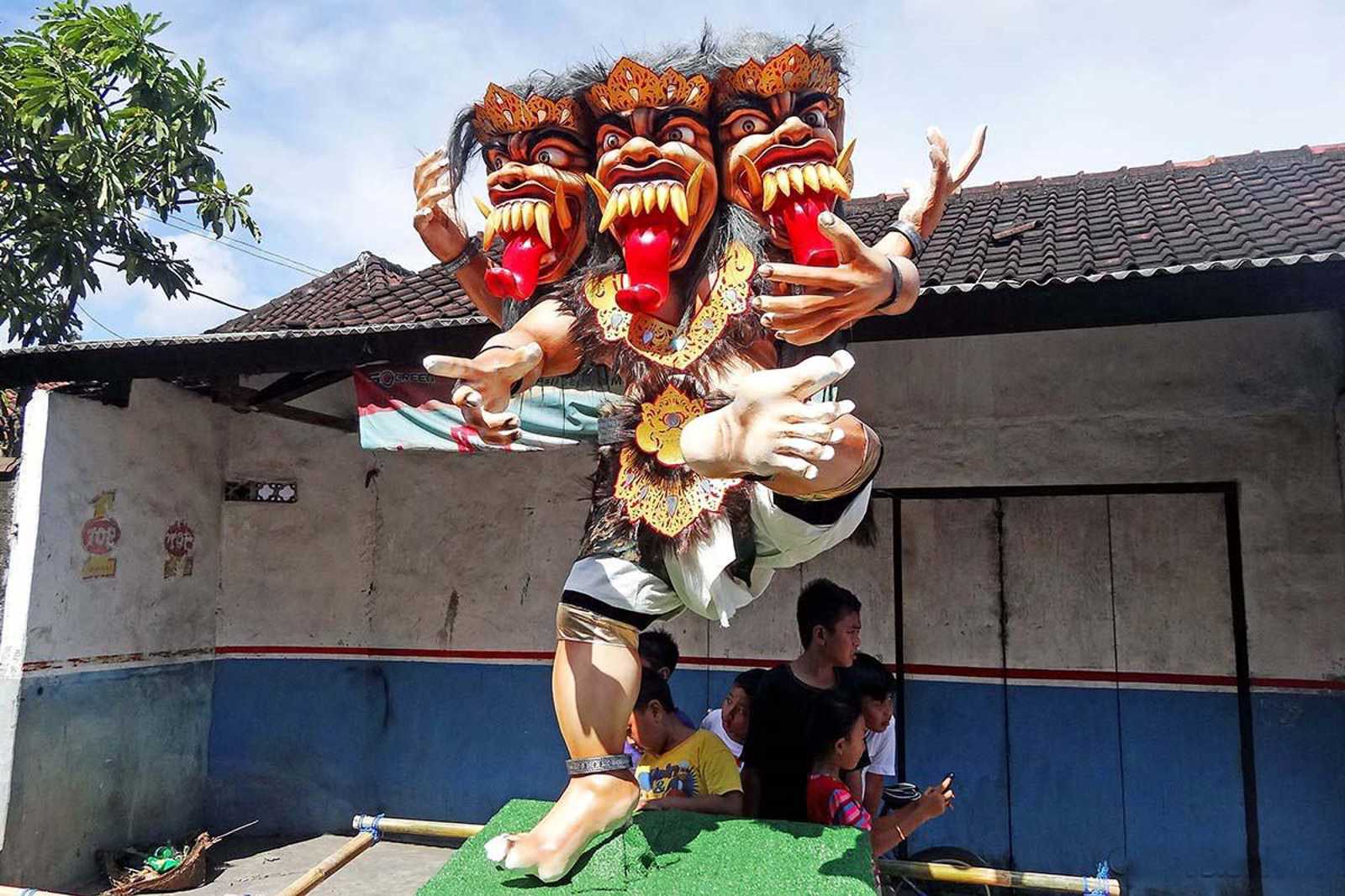
Nyepi: a different kind of New Year celebration
The day of silence marks the turn of the Saka calendar of western Indian origin. It's one among the many calendars assimilated by Indonesia’s diverse cultures. The Saka is also among 2 calendars jointly used in Bali. It follows a lunar sequence and is 78 years behind the Gregorian calendar. Nyepi follows right after a new moon, typically in March.
Leading up to Nyepi Eve, village meeting halls (banjar) showcase paper-mâché effigies called ogoh-ogoh. They’re built by youth groups who design and build their mythical figures with intricately shaped and tied bamboo framework before many layers of artwork. These artistic creations have been offshoots of the celebration since the early 1980s. Much of it has stayed on to become an inseparable element in the island-wide celebration.
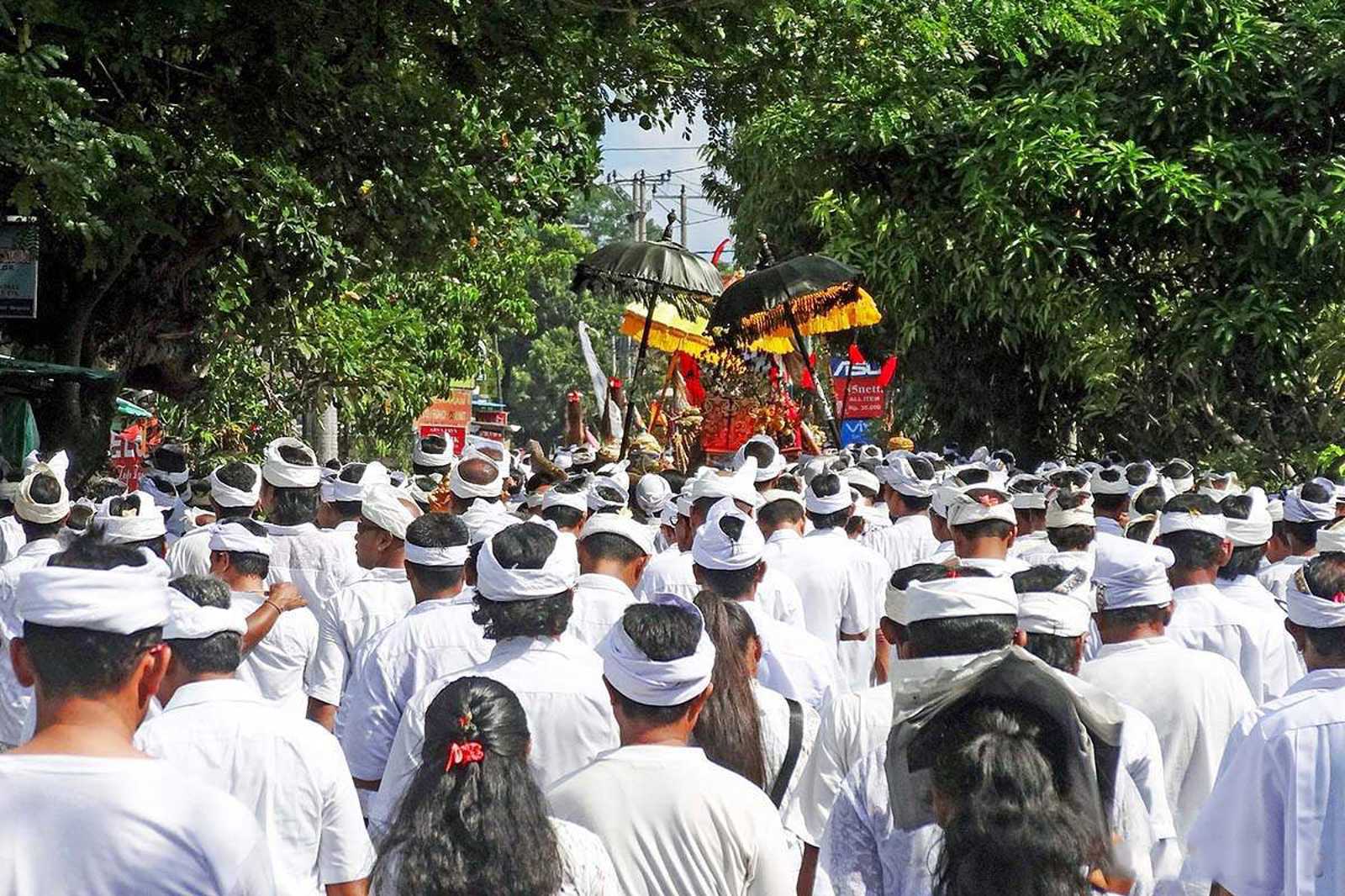
Before the day of silence
Highlight rituals essentially start 3 days before Nyepi, with colourful processions known as the Melasti pilgrimages. Pilgrims from different village temples all over Bali convey heirlooms on long walks towards the coastlines for elaborate purification ceremonies. It’s one of the best times to photograph an iconic Balinese procession, with parasols, banners and small effigies offering a colourful spectacle.
On Saka New Year’s Eve, it’s then all blaring noise and merriment. Every Balinese household starts the evening with blessings at the family temple and continues with a ritual called the pengrupukan, where each member participates in ‘chasing away’ malevolent forces (bhuta kala) from their compounds. Pots and pans or any other loud instruments are struck repeatedly together with a fiery bamboo torch.
These ‘spirits’ are later manifested as the ogoh-ogoh to be paraded in the streets. As the street parades ensue, bamboo cannons and occasional firecrackers fill the air with din, flames and smoke. The Nyepi Eve parade usually starts at 7pm local time.
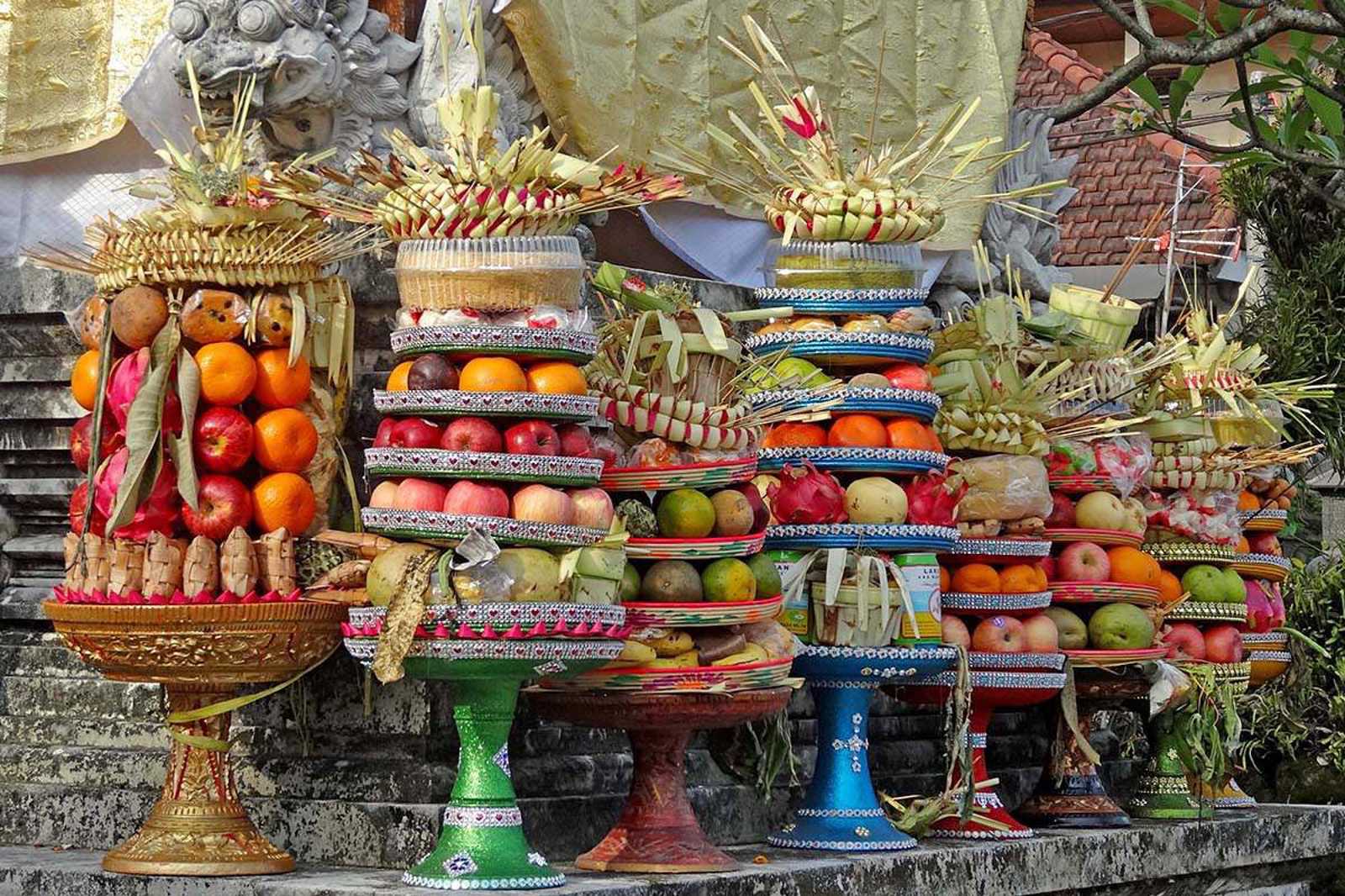
When the whole island shuts down
On Nyepi Day, complete calm enshrouds the island. The Balinese Hindus follow a ritual called the Catur Brata Penyepian, roughly ‘The 4 Nyepi Prohibitions’: amati geni (no fire), amati lelungan (no travel), amati karya (no activity), and amati lelanguan (no entertainment).
Some consider it a time for total relaxation and contemplation. For others, a chance for Mother Nature to ‘reboot’ herself after 364 days of bearing human activity. No lights are turned on at night – total darkness and seclusion go along with this new moon island-wide – for 24 hours straight until 6am the following day.
No motorised vehicles are allowed on the streets, except ambulances and police patrols for emergencies. As a hotel guest, you’re confined to your hotel premises, but free to continue to enjoy the hotel facilities as usual. Traditional community watch patrols or pecalang enforce the rules of Nyepi, patrolling the streets by day and night in shifts.
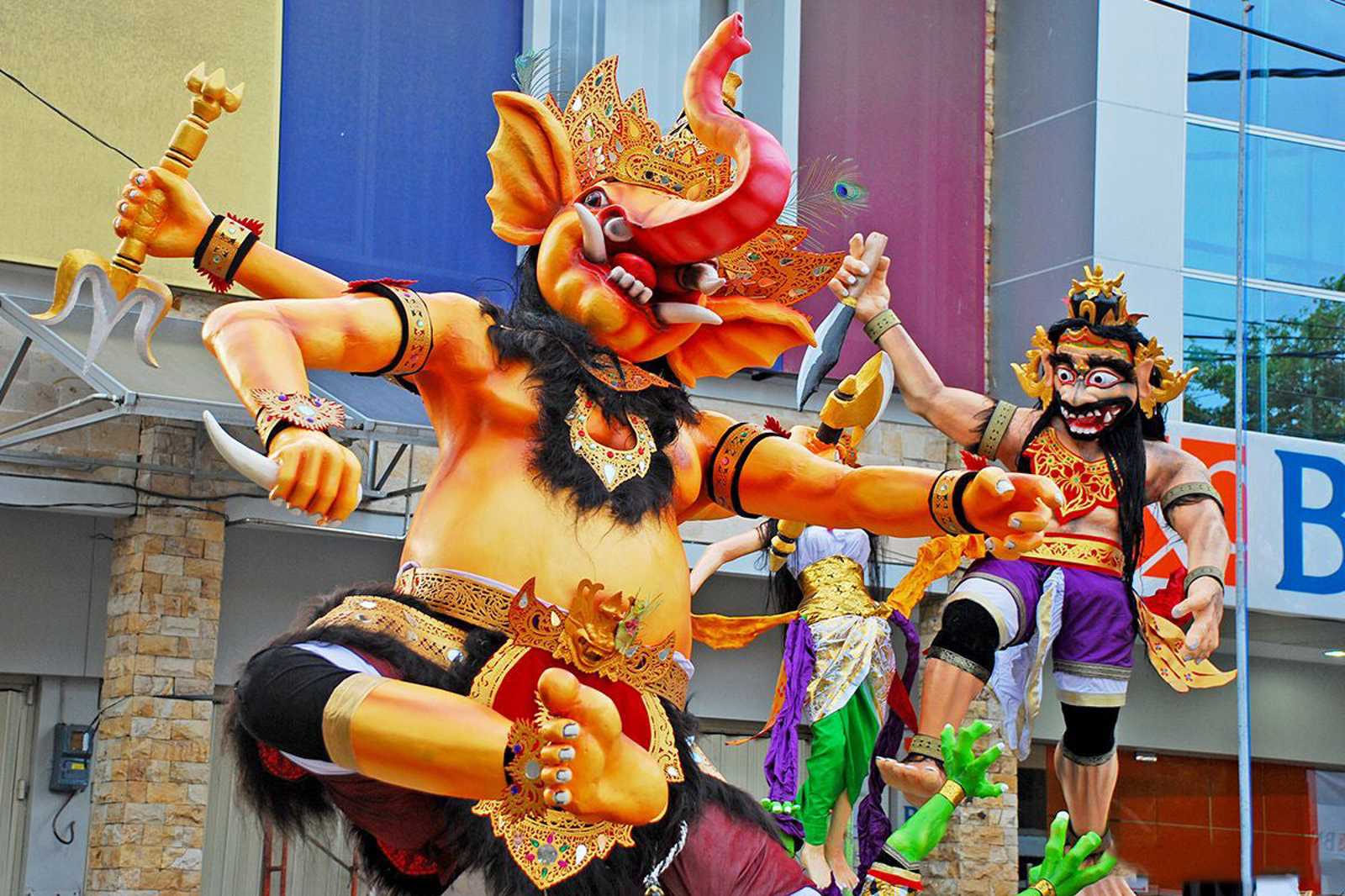
Ngembak Geni: the day after Nyepi
On the day after Nyepi, known as ngembak geni, you can head down to the village of Sesetan in southern Denpasar for the omed-omedan, roughly the ‘festival of smooches’. This is a much-localised festivity, pertaining only to Sesetan's Banjar Kaja community.
Youths take to the street as water is splashed and sprayed by villagers – the highlight is 2 throngs of boys and girls who engage in a tug-of-war-like scene as the whole village and visitors cheer on. Successive pairs in the middle are pushed to a smooch with each push and shove.
